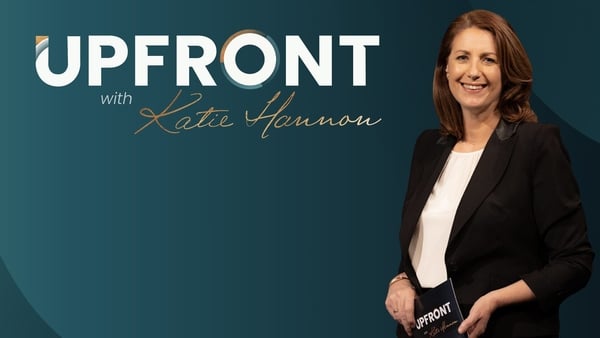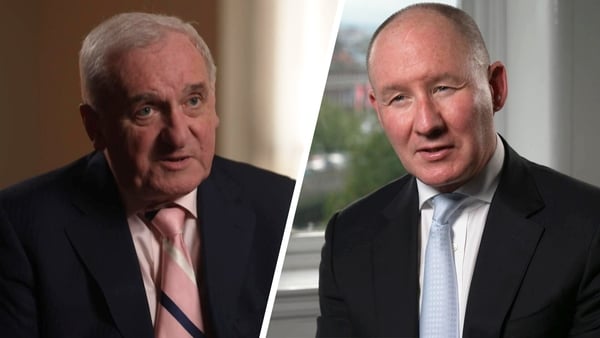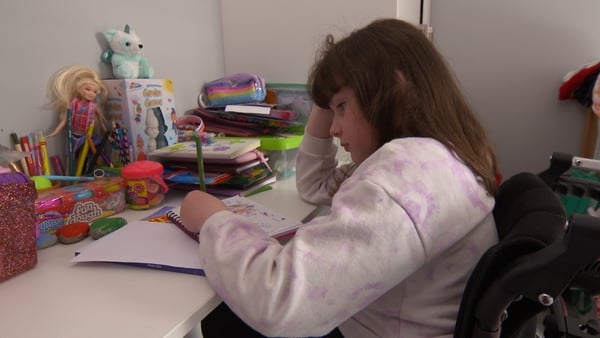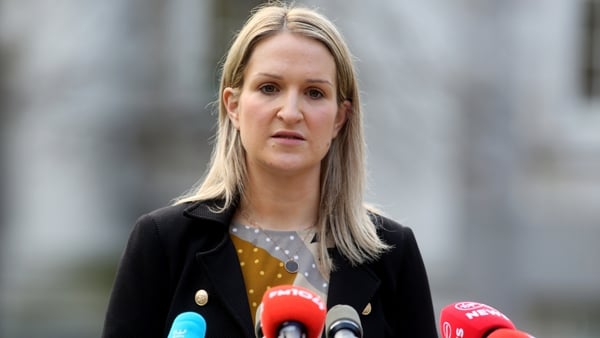Every week, James Madigan walks the perimeter of Dublin's Iveagh Markets and picks up shards of red brick from the ground.
Large sections of the wall have been damaged over the decades; the bricks have lost their waterproof finish and become porous.
They flake and shed, leaving chips of brick on the pavement. Mr Madigan, from the Friends of the Iveagh Market campaign group, has bags full of it.
Built in 1906 and given to Dublin city as a gift to the people by the Guinness family, the Markets have been closed to the people for 27 years.
The Palladian entrance is still an impressive and arresting landmark, though its doors are now permanently locked and gated.
Inside, nature has taken over. The once bustling market hall, now empty of people, is teeming with ferns, buddleia and other greenery.
The large pools of standing water give the impression of a temperate rainforest.
Watch: Prime Time speaks to locals about efforts to save Dublin's Iveagh Markets
We need your consent to load this comcast-player contentWe use comcast-player to manage extra content that can set cookies on your device and collect data about your activity. Please review their details and accept them to load the content.Manage Preferences
Its interior, constructed using the finest materials and engineering of the Victorian age, shows signs of decades-long neglect.
The roof has multiple gaping holes, exposing the interior to the elements.
Excavation works have been carried out on the site, apparently to examine whether it was viable to build a basement under the building. Large sections of the load-bearing floor slab were removed, leaving the foundations uncovered and compromising their bearing capacity.
The state of the market has led An Taisce to identify it as one of Ireland’s most at risk buildings.
Along with other members of the Friends of the Iveagh Market group, Mr Madigan has been campaigning for urgent work to be carried out as soon as possible. Many among the group worked in the market as traders before it closed.
They would like to see it reopened and restored. First and foremost, they’d like to see it saved.
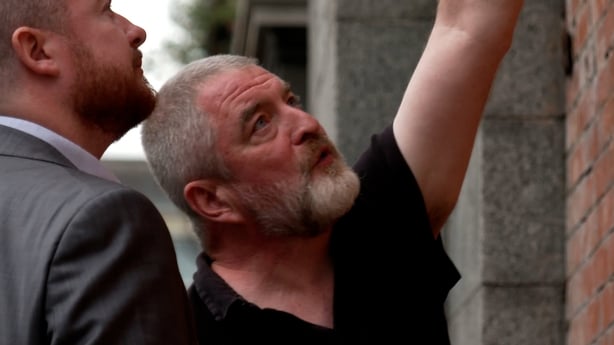
That might be easier said than done. Securing the building, simply restoring it to a point where it’s no longer at risk, will cost tens of millions.
An architectural report carried out by Howley and Hayes for Dublin City Council (DCC) in 2019 found that the building was in an advanced state of dereliction and unsafe, due to a combination of serious neglect and what it described as "several damaging interventions"
Multiple reports have said the building is saveable, but at a cost. It is estimated that simply repairing the building alone could cost up to €30 million.
For Mr Madigan, emergency works cannot begin quickly enough.
"There have been no positive interventions to the Iveagh market. Everything seems to take away from the structure. The interventions need to start now," he said.
Legal Dispute
Restoration is one issue, ownership is another. It is not currently clear who owns it.
Originally built by the Earl of Iveagh and presented as a gift to the city of Dublin, ostensibly to give street traders a place to work in shelter from the cold and rain, the markets had long been in decline when DCC closed the doors in 1996.
Businessman and publican Martin Keane was given a 500-year lease on the site and permission to develop it into a modern market with restaurants and a hotel.
His vision was never realised. The plans stalled, the economy crashed, and his planning permission was not renewed.
Eventually, the council moved to repossess the Iveagh Markets from Mr Keane.
Meanwhile, the building remained empty.
Historic markets of this era are thriving in other European cities: the Time Out Market in Lisbon, Mercado San Miguel in Madrid, and, closer to home, the English Market in Cork and St George’s in Belfast.
Dublin has no equivalent, despite having not just one but two magnificent market halls.
On the other side of the Liffey is the City Fruit and Vegetable Wholesale Markets. Its doors have been closed since 2019 and, aside from occasional seasonal events, the market also lies empty.
Unlike the Iveagh Markets, there is a clear plan in place to reopen the fruit and vegetable market as a seven-day retail food market, with conservation works due to begin soon.
It shows that there is a template for making the most of these beautiful Victorian buildings, however, there is a marked difference in the respective states of the two markets.
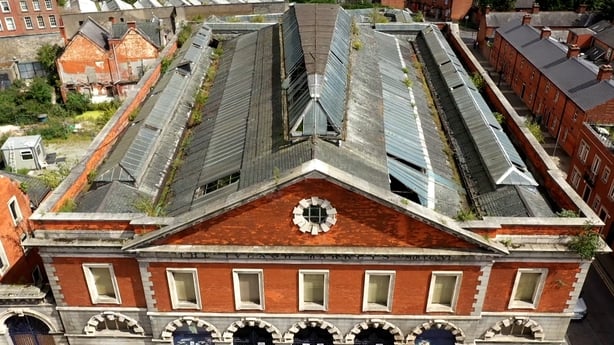
An Taisce’s Kevin Duff told Prime Time the fruit and vegetable market was in much better condition.
"It's in pretty good nick as it's been in use until relatively recently and still is in use for one-off events," Mr Duff said.
He added that both markets are landmark buildings, stressing the importance of saving Dublin’s architectural heritage.
In 2020, the fourth Earl of Iveagh returned to Dublin in an effort to save the market that still bears the family name.
The agent of Edward Guinness changed the locks on the building and effectively repossessed it from DCC.
He told Prime Time that the market is the only part of his family's built legacy in Dublin, which includes the Iveagh Gardens, the Iveagh Baths and the Iveagh Play Centre - long known as the Bayno - that was in danger and that he felt it was critical for him to intervene.
An unusual method was used by Edward Guinness to repossess the site, a 'reverter clause’ from the original 1906 deed was cited.
"Basically, [the clause] states that if it's not being used as a market, the lands revert back to the Guinness family. That Edwardian document is what he relied upon to go and repossess the derelict building back in 2020, but that is hotly contested," said Francesca Comyn, legal editor for TheCurrency.news.
The move has sparked multiple court cases now involving the Council, the developer and the Earl.
The parties involved pointed fingers at each other in court about where responsibility for the state of the building lies.
"Essentially it was put to Martin Keane that he had presided over neglect at the building. There were a lot of denials about that, given that the proceedings were at quite an early stage, they were relatively boilerplate denials," says Ms Comyn, who attended the sittings.
"[The denials] were to the effect that he had paid for archaeological works to be carried out of the building, that he had done everything properly and had spent a lot of money or paid a lot of money to Dublin City Council for maintenance."

Two years of High Court mediation between the parties yielded no results on the ownership and control of the site.
At the end of last year, Edward Guinness handed the keys back to DCC.
He had been paying for private security out of his own pocket, but the lack of progress prompted him to withdraw.
"My pockets aren't deep forever, and I felt that it was time for me to move on from that role. I had hoped that passing on the keys would push forward the progress," he told Prime Time.
Meanwhile, none of the various claims on the markets were vindicated by the courts and the decay of the buildings continued.
Dublin’s market buildings are both protected structures but the Iveagh Market, in particular, has fallen into a state of grave disrepair.
According to Mr Duff, there has been a failure to implement the measures of the Architectural Heritage Planning and Development Act in regard to protected structures.
"The local authority, Dublin City Council in this case, has the power to compel the owner to carry out works to prevent the endangerment of the protective structure. But there's been a failure there to implement these powers adequately," Mr Duff said.
Noel Fleming, owner of Noel’s Deli on neighbouring Meath Street and a campaigning member of the Friends of the Iveagh Market, says the council was given the market as a gift and failed to adequately protect it.
Edward Guinness believes the State and its elected officials now need to decide how much of a role it will play in the future of the markets, but points out that it will cost tens of millions of euro to get to a point where anyone can even think of operating it again.
When asked how willing he is to be involved in that financial effort, he told Prime Time: "I must be realistic. That’s all I can say."
Both Mr Keane and DCC declined to be interviewed by Prime Time.
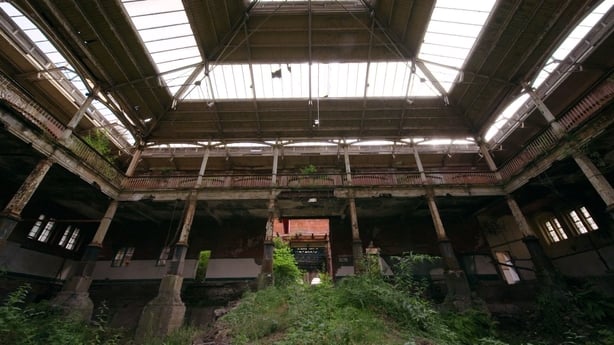
DCC told Prime Time that an architect-led design team will be appointed this month to begin works to stabilise the market.
It says it expects these works to be completed in 2024. It would not comment on the protracted legal battles over the control and ownership.
Prime Time understands that face-to-face talks involving both Mr Keane and Edward Guinness have taken place in recent weeks.
Back in the Liberties, the decaying shell of the Iveagh Markets, with its warning signs and razor wire, contrasts sharply with the shining pavements and newly planted trees of Francis Street that has been refurbished around it.
The potential of this building and its history may yet be realised; a destination for tourists, a place of employment for locals and a showcase for Ireland’s home-produced food and crafts. Instead, the Iveagh Markets is a grave.
Ms Comyn, who has followed the story closely, is not convinced that there will be any movement in the short term.
"It's very hard to see a positive outcome given the delay that we've seen to date. We've had over two years of secret mediation talks and they haven't borne fruit," Ms Comyn said.
"You'd be optimistic in the long run that some resolution will be found, but my instinct would be that we'll be waiting quite some time."


